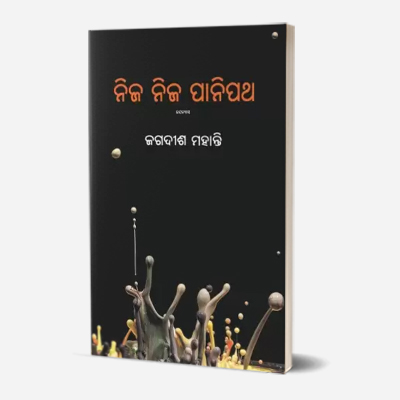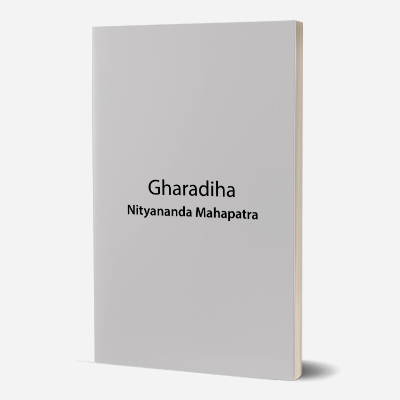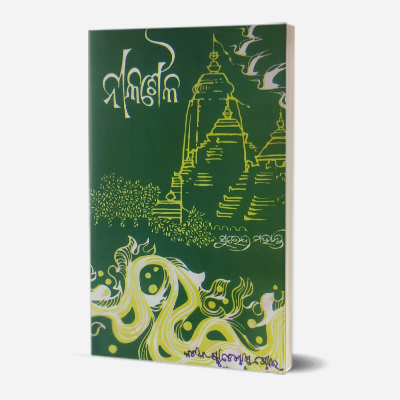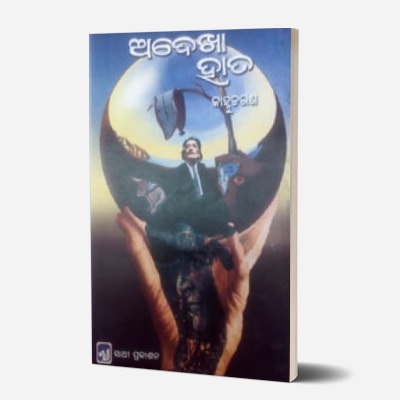Amrutara Santana
By Gopinath Mohanty
Translated into English as Amrutara Santana: The Dynasty of the Immortals by Bidhubhusan Das, Prabhat Nalini Das, Oopali Operajita
Amrutara Santana is an epic novel that puts together, in fictional form, the anguish and ecstasy, the joys and the sorrows of the people belonging to the Kuvi Kondh tribe, numerically the largest among the Odia tribes and one of the most primitive. It dates from the mid-1940s, just before India’s Independence, and lays bare the cruel patterns of tribal people’s dispossession and exploitation still all too relevant today. The opening chapter sets the tone, the passing away of Sorabu Saouta, the elderly village headman, symbolizing the end of an era and the advent of modern industrial society. Mohanty’s unromanticised portrait of tribal society raises profound questions on change, do new roads really bring development, or a degradation of culture and community as they allow the exploiters and denigrators of Adivasi culture to encroach on their indigenous lands. The lyrical and philosophical quality of this epic novel of tribal world caught the imagination of the people and Gopinath Mohanty was felicitated with the first ever Sahitya Akademi Award in 1955 as the most outstanding literary work in Odia since Independence.
About the Author
Gopinath Mohanty is one of the most outstanding figures of post-independence Indian literature. Gopinath’s first novel, Mana Gahirara Chasa, was published in 1940, which was followed by Dadi Budha (1944), Paraja (1945) and Amrutara Santana (1947). A prolific Odia writer of the mid-twentieth century after Fakir Mohan Senapati, he wrote twenty-four novels, ten collections of short stories, three plays, two biographies, two volumes of critical essays, and five books on the languages of the Kandha, Gadaba and Saora tribes of Odisha. He translated Tolstoy’s War and Peace (Yuddh O Shanti), in three volumes, 1985–86), and Rabindranath Tagore’s Jogajog, (1965), into Odia. Among the many awards he won are two prestigious National Awards: the Sahitya akademi Award and the Jnanpith Award.
Also read
Mati Matala
Portraying the conflict of cultures, the novel envisions, in the words of J.M. Mohanty, a new way of life ‘more elaborately and vigorously than Paraja where ‘the gloom was total’ or Amrutara Santana which ‘breaks up with the glimpses of a new hope’. The book vividly portrays the rural life of Odisha and its socio-political transformation in the post-independence period. The interpersonal relationships between the characters is deftly and very subtly depicted in this massive novel of epic dimensions, running almost into 1000 pages and the writer took more than 10 years to complete this work, which was an experiment in itself, in order to probe his own mind as it goes through transformations over a time period. Published in 1964, it received the Jnanpith Award in 1974, the first book from Odisha to have been bestowed with this honour.
Paraja
Translated into English by Bikram K. Das
As an administrator with the then-Orissa Administrative Service, Gopinath Mohanty lived across different regions of the state, including tribal areas. Written in 1945, his novel Paraja tells the story of the Paraja tribal people through Sukurjani’s family: their relationship to the land, the gradual loss of their land to the state, and the conflict between tribal and non-tribal cultures and values. A classic of modern Indian fiction, Mohanty’s narrative can be read as a searing attack on the state’s exploitation of protected people and their land. The novel, furthermore, transcends what it documents because its characters are not merely primitive tribesmen ensnared by a predatory moneylender. Mohanty’s protagonists are also quintessentially men and women waging heroic but futile war against a hostile universe.
Adekha Hata
By Kanhu Charan Mohanty
Chhabi, a young girl, lives in a village by a river with her mother. Her ailing father lives away from them in Cuttack, where he teaches at a school and send them a little money from his meagre salary every month. He hopes to find a decent groom for his beautiful daughter but his sudden death shatters his world and renders the life of his wife and daughter extremely fragile.
Almost everyone in the gossip-ridden, claustrophobic village turns against Chhabi, maligns her and conspires to marry her off to a village idiot, as if being poor, beautiful and vivacious is a crime for which she deserves to be penalised. The ruthless village chief, whose son once wanted to marry Chhabi, and was prevented from marrying her on account of her poverty, blackmails her into accepting the match. During a trip to Cuttack, where Chhabi and her mother go to sell off their homestead land to a fellow-villager to arrange money for the wedding, the young girl gets to meet the man her father had chosen as her prospective groom. The chance meeting fills her heart with strange longings but she soon learns that he is already betrothed to another girl.
Back in the village, she resigns herself to the unspeakable fate waiting for her and preparations for the wedding begin. Then, suddenly, her mother, who had timidly submitted to the dictates of the village chief and other villagers, musters the courage to confront them and cancels the wedding. She finds an ally in the village chief’s son, who goes out to find a groom for Chhabi. Miraculously a groom is found, who turns out to be a cousin of the young man her father had wanted her to marry.
Presented in the voice of the girl, the novel movingly evokes life in an Odia village before independence. The action unfolds against an idyllic landscape, which provides an unlikely backdrop to meanness, heartless cruelty, and small triumphs of human generosity. The novel quietly dramatises conflicts between duty and desire, between stifling conventions and assertion of individuality. The voice of the narrator bravely acknowledges and expresses the power and ambivalence of desire and never subjects it to puritanical censure. This is remarkably bold for an Indian novel written almost eight decades ago.
About the Author
Kanhu Charan Mohanty was an Indian Odia language novelist, who is considered as one of the most prolific and indeed the most popular novelist of the post-independence period. Mohanty has mostly written about the Odishan rural society and is known for depicting social realism. Most of his work highlighted problems associated with the plight of woman, caste and economic exploitation. Some of his important works are, Adekha Hata (The Unseen Hand, 1939), Shasti (The Punishment, 1945) and Ha Anna (The Famine,1933).
Mohanty won several awards for his literary work. He was awarded the Sahitya Akademi Award in 1958 for his novel, Kaa, published in 1956, the Jeevan Rang Prize in 1970, and the Neela Saila Award in 1992. He was also selected as one of the fellows of the Sahitya Akademi, however Mohanty died on 6 April 1994 at the age of 87 before the honour could formally be conferred upon him.
Also Read
Ka
Ka (Impersonation, 1956) deals with the subject of female infertility and maternal death. Ka, as the name itself indicates, presents a social picture where the one plays the role of another. In the novel, Sunanda, the hero, married Nandika, who unfortunately was a barren woman. She, with exemplary sacrifice, induced her husband to marry another lady, who would play her own role fruitfully; and this ‘Ka’ or substitute might be blessed with the good fortune of being a mother of smiling, loving children. It received the Sahitya Akademi Award in 1958.
Jhanjha
Translated into English as The Storm by Dr Bijay Kumar Nanda
First published in 1949, this novel is a perfect blend of psychological drama and social realism with both impinging upon each other and creating a tension in the narrative. Kshanaprava, the female protagonist around whom the story revolves, is a symbol of emancipation as well as a victim of male chauvinism and through a very sub de, complex and various narrative devices like monologues, descriptions, playing out of psychological dilemmas, the novelist is able to lay bare not so sublime intentions of her two suitors, her blind husband Tusharkanti and her ex-lover, Dushmanta, who are themselves fine studies in human psychology. But it is more than the unique triangular relationship of the three main characters; it also brings into sharp focus the hypocrisy and the condescending attitude with which public service contributes towards the plight of the poor and marginalized.




